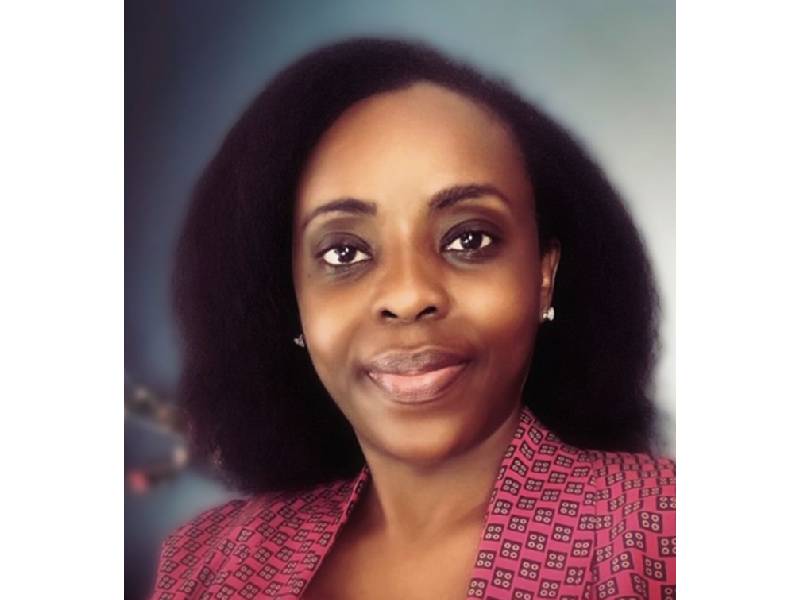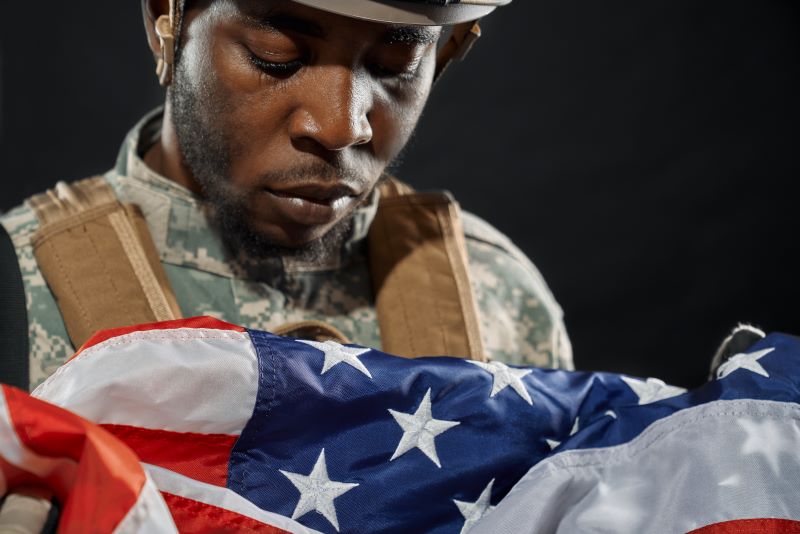Black people have played key roles in the assembly of the International Space Station, NASA, and today utilize the orbiting lab by performing numerous spacewalks and robotic operations and conducting research as expedition crewmembers.
Keisha Schahaff, 46, a health coach, and her daughter, Anastatia Mayers, 18, a student at Scotland’s University of Aberdeen took off from the Spaceport America in the New Mexico desert in August this year Virgin Galactic’sVSS Unity. Schahaff and Mayers made their historic journey after winning a competition in November 2021. Schahaff, born and raised in the Caribbean nation of Antigua and Barbuda won two tickets for the flight.
She was part of a fundraising competition organized by Virgin Galactic and Space for Humanity, a nonprofit with the goal of making space more accessible. Schahaff gave the second ticket to her 18-year-old daughter Anastasia Mayers, who’s studying philosophy and physics at Aberdeen University in the United Kingdom. They are joined on the journey by British Olympian, Jon Goodwin, who was among the first to buy a ticket in 2005, two pilots, and the Virgin Galactic’s astronaut trainer. This was Virgin Galactic’s second commercial flight into space.

The previous fight had reached an impressive altitude of approximately 85 kilometers (approximately 53 miles) above the Earth’s surface. Mayer, the second youngest person to go to space, hopes she can use the experience to inspire others. Mayers has been curious about space since she was about 8 years old and started learning about astronomy. She wants her experience to inspire others to believe in their dreams. “My intention is to break any barriers we set for ourselves or the world sets for us,” she said. “I want people to know that it doesn’t matter where you come from, who you are — anything — your dream is your dream, and you can make that happen, despite what anyone else says,” she said in this interview.
Dorothy Vaughan was a mathematician and “human computer” for NASA. She was the first Black person to supervise staff at West Area Computers. Vaughan spent 28 years in this position, teaching herself and the other women about machine computers and programming languages. Dorothy Vaughn led the way for Black women to be involved with NASA’s missions. Vaughan began working for the Langley Research Center, NASA’s oldest flight center, in 1943 as a mathematician and programmer. Most of her work was based on calculating flight paths and computer programming. It was within Langley that Vaughan was assigned to the West Area Computers unit, and she became acting head in 1949. Throughout her career, she worked to promote STEM education, teaching other women all about computer programming and empowering women to pursue their passion for science and technology.

Robert H. Lawrence holds the honor as the first African American selected for a space program. In June 1967, the U.S. Air Force selected Lawrence as a member of the third group of aerospace research pilots for the Manned Orbiting Laboratory (MOL) Program, a joint project of the Air Force and the National Reconnaissance Office, to obtain high-resolution photographic imagery of America’s Cold War adversaries. Tragically, Lawrence lost his life in an aircraft accident in December 1967, and the Air Force canceled the MOL Program in June 1969.

Guion ‘Guy’ Stewart Bluford Jr. is an American aerospace engineer, retired United States Air Force officer and fighter pilot, and former NASA astronaut. In this capacity, he became the first African American to go to space. While assigned to NASA, he remained a USAF officer rising to the rank of colonel. In total, Bluford spent 28 days, 16 hours, and 33 minutes in space. During this time, he conducted dozens of tests and experiments, including researching the physiological effects of space flight and collecting data on Earth’s aurora. He also helped deploy the Global Low Orbiting Message Relay Satellite and operate the Continuous Flow Electrophoresis System.
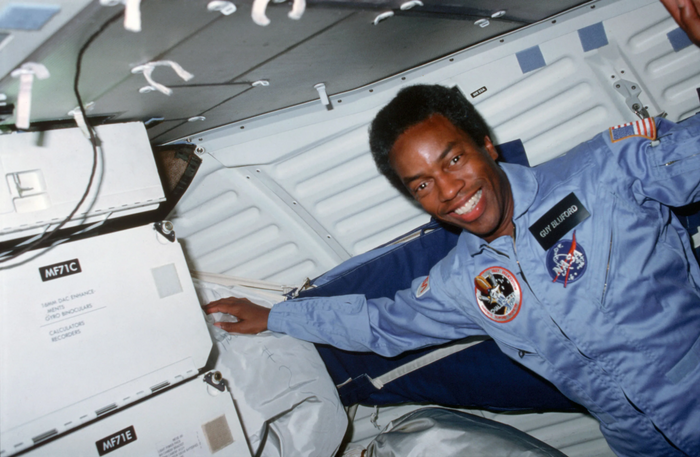
Bernard A. Harris is a former NASA astronaut who made history as the first Black person to perform a spacewalk. His dream of becoming an astronaut began in 1969 when he watched the Apollo 11 astronauts land on the Moon for the first time. Over twenty years later, in 1990, that dream came true when NASA selected him to become an astronaut. Harris returned to space on his second flight as the first African American astronaut designated as the Payload Commander for the mission, in charge of managing the scientific experiments conducted in the Spacehab module. Discovery’s STS-63 mission, the second Shuttle-Mir flight, included a rendezvous with the Mir space station.
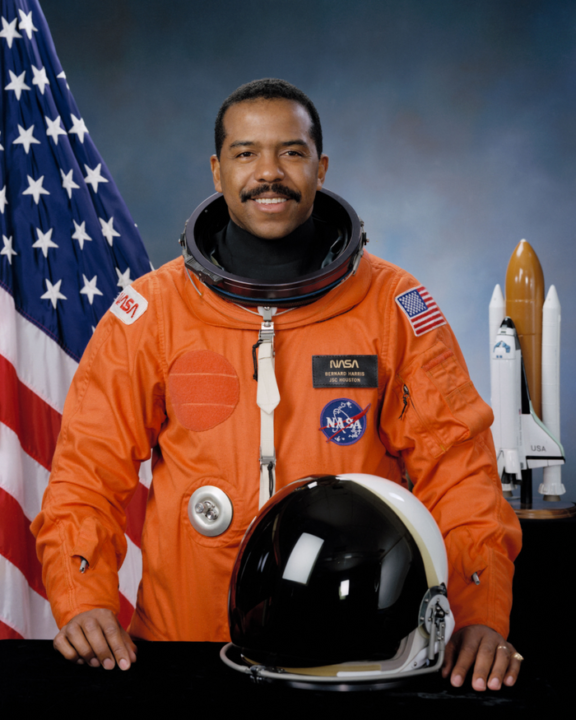
When the space shuttle Endeavour blasted off on its second mission in 1992, it carried the first African-American woman into space. But Mae Jemison is more than an astronaut—she’s also a physician, a Peace Corps volunteer, a teacher, an engineer, and founder of a technology company and a nonprofit. Jemison became the first African American woman to be admitted into NASA’s space training program in June 1987. Five years later, she again made history when she became the first African-American woman in space aboard the Space Shuttle Endeavour. In total, she completed over 190 hours in space. Another first was she was the first former NASA astronaut to appear on a Star Trek episode.
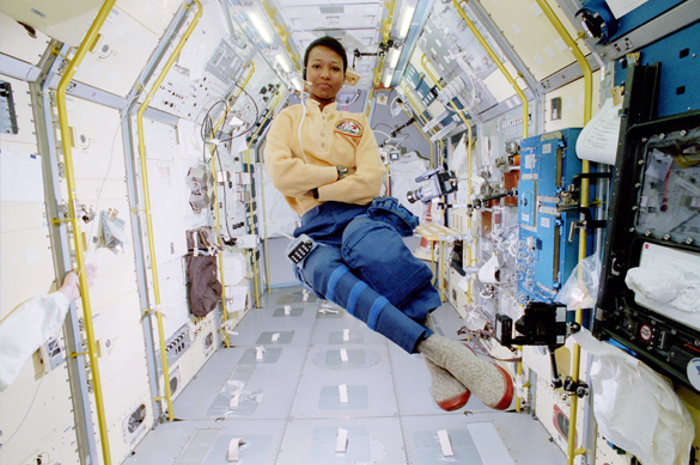
Source

Boitumelo Masihleho is a South African digital content creator. She graduated with a Bachelor of Arts from Rhodes University in Journalism and Media Studies and Politics and International Studies.
She’s an experienced multimedia journalist who is committed to writing balanced, informative and interesting stories on a number of topics. Boitumelo has her own YouTube channel where she shares her love for affordable beauty and lifestyle content.


